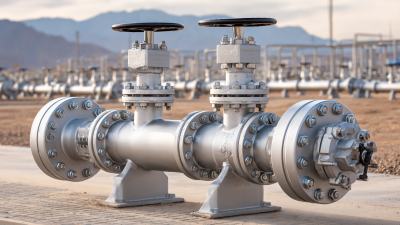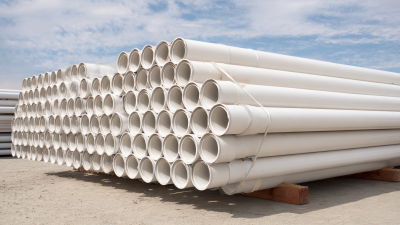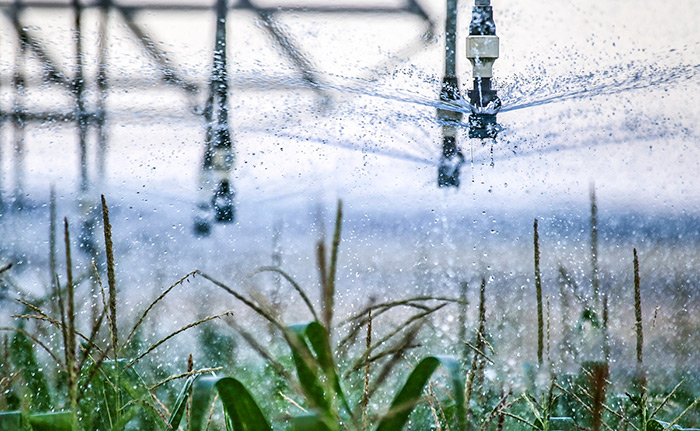Exploring the Benefits of PVC Butterfly Valves: Your Ultimate Guide to Efficient Flow Control
Table of Contents
- The Essential Role of PVC Butterfly Valves in Modern Flow Control Systems
- Key Advantages of Using PVC Butterfly Valves in Various Industries
- Comparative Analysis: PVC Butterfly Valves vs. Traditional Valve Types
- Maintenance Tips for Maximizing the Lifespan of PVC Butterfly Valves
- Industry Statistics: Efficiency Gains from Implementing PVC Butterfly Valves
- Best Practices for Installation and Operation of PVC Butterfly Valves
- FAQS
- Conclusion
- Related Posts
When it comes to managing fluids, PVC Butterfly Valves have really become a go-to for smooth and efficient flow control. They come with quite a few perks that make them perfect for all sorts of industrial setups. At Ningbo Pntek Technology Co., Ltd., we've been specializing in exporting top-quality plastic pipes, fittings, and valves for over a decade, so we truly know what it takes to deliver innovative solutions that boost your operational efficiency. In this guide, we’ll walk you through why PVC Butterfly Valves are worth considering — they’re lightweight, easy to install, and built to last. Knowing the benefits of these valves can help your business streamline fluid management and even support more sustainable practices. Honestly, investing in PVC Butterfly Valves from a trusted supplier like us could seriously upgrade your flow control game. Give it a thought — you might be surprised at how much they can improve your system.

The Essential Role of PVC Butterfly Valves in Modern Flow Control Systems
PVC butterfly valves are pretty essential when it comes to modern flow control setups. They offer a smart, cost-effective way to handle fluid movement across a bunch of different applications. I recently came across a report from the Flow Control Industry Association that forecasts the global valve market hitting around $80 billion by 2025. A good chunk of that is made up of PVC valves, including butterfly types, mainly because they’re lightweight and resist corrosion so well. That makes them a go-to choice for everything from city water systems to industrial plants—anywhere you need reliable, efficient flow management.
One of the reasons these valves are so popular is their design, which allows for quick and precise adjustments to flow rates—really helps keep operations running smoothly. Some research from the American Society of Plumbing Engineers even suggests that switching to PVC butterfly valves can save up to 30% on energy costs compared to traditional metal ones. Plus, they don’t need a lot of maintenance and are pretty easy to install, which means less downtime and lower costs over time. All in all, they’re really becoming the preferred option these days for modern flow control—no wonder they’re so widely used!
Key Advantages of Using PVC Butterfly Valves in Various Industries
You know, PVC butterfly valves are really starting to catch on in a bunch of industries these days, and honestly, it's for good reasons. One of the biggest perks? They’re super lightweight, which makes installing and maintaining them a whole lot easier—even if you're not a plumbing pro. Unlike their metal counterparts, PVC valves won’t rust or corrode, so they’re perfect for stuff like chemical processing, treating wastewater, or irrigation setups. Plus, since they’re so durable, you don’t have to worry about replacing them all the time or shelling out extra for upkeep—those savings really add up over time.
**Tip:** When you’re picking out PVC butterfly valves, just make sure the specs line up with what your system needs—think pressure, temperature, and the kind of fluid you're working with. That way you avoid any headaches later.
Another cool thing about PVC butterfly valves? They do a great job sealing tight. They close quickly and securely with hardly any effort, which not only saves energy but also keeps things running smoothly. The fact that they use a simple quarter-turn operation means you can control flow speeds pretty darn fast and accurately—big wins in industries like food processing, pharmaceuticals, or even aquaculture. Plus, their smooth action helps keep the flow steady, so you don’t end up with turbulence or risking damage to sensitive equipment.
**Tip:** Always double-check that the valve’s compatible with your fluid. You definitely want to avoid any chemical reactions that could mess things up or weaken the valve over time.
Exploring the Benefits of PVC Butterfly Valves: Your Ultimate Guide to Efficient Flow Control - Key Advantages of Using PVC Butterfly Valves in Various Industries
| Industry | Benefits | Applications | Temperature Range (°C) | Pressure Rating (bar) |
|---|---|---|---|---|
| Water Treatment | Corrosion Resistance | Flow Regulation | 10 to 60 | 10 |
| Chemical Processing | Lightweight | Chemical Flow Management | -10 to 50 | 5 |
| Food & Beverage | Easy to Clean | Liquid Handling | 0 to 80 | 6 |
| HVAC Systems | Low Friction Loss | Airflow Control | -20 to 60 | 7 |
| Irrigation | Cost-effective | Control Water Supply | 5 to 50 | 4 |
Comparative Analysis: PVC Butterfly Valves vs. Traditional Valve Types
When you're comparing PVC butterfly valves to the more traditional types, there are a few key things you'll want to keep in mind. PVC butterfly valves are pretty popular because they're lightweight, which makes them a lot easier to install and handle—especially if you're used to heavier metal valves. Plus, they have some serious resistance to corrosion, which is a huge plus in situations where the fluids might be abrasive or aggressive. That kind of durability really pays off in the long run, since it means less maintenance and fewer replacements down the line.
**Quick tip when you're picking a valve:** Think about what your specific needs are—temperature, pressure, and what kind of chemicals you'll be working with. It's really important to make sure the valve material is compatible with the fluids you're controlling. For example, PVC butterfly valves do great in environments where corrosion isn’t a concern, but if you're dealing with high-pressure systems, traditional valves might be the better option.
One more thing that's worth mentioning: PVC butterfly valves are super efficient when it comes to flow control. They allow for quick operation and really minimize pressure drops—so, in systems where managing fluid flow matters, they can actually save you energy. On the flip side, traditional valves might create more resistance and use more energy to keep the flow going, especially in bigger setups. That makes PVC butterfly valves a pretty attractive choice if you're into sustainable, cost-effective engineering designs.
**Pro tip:** you might want to look into adding automated controls along with these valves. That can really help optimize flow and improve the overall performance of your system—saving you even more energy and making everything run smoother.
Maintenance Tips for Maximizing the Lifespan of PVC Butterfly Valves
Taking good care of your PVC butterfly valves is super important if you want them to work smoothly and last as long as possible. From what I’ve read in industry reports, just staying on top of maintenance can actually boost their lifespan by up to 30%! It’s really key to do regular inspections—keep an eye out for any signs of wear, rust, or buildup that could clog the flow. And don’t forget to give the valve’s seating a good clean and make sure it’s opening and closing without a hitch—that way, you can avoid bigger problems down the line.
A few tips for taking care of these valves? Well, routine lubrication of the stems and seals is a smart move because friction can wear them out faster than you’d like. Also, think about where your valves are operating—extreme temps or harsh chemicals? That probably means you need to check on them a bit more often. Using protective coatings can also help shield against corrosion, giving your valves an extra layer of defense and extending their lifespan.
And here’s another thing—keeping the system pressure within the recommended limits is a must. Over-pressurizing is actually one of the main causes of valve failures, so keeping things in check can really improve performance and reliability. Plus, making sure your team knows how to handle the valves properly and training them regularly can go a long way in preventing accidental damage during operation.
Industry Statistics: Efficiency Gains from Implementing PVC Butterfly Valves
Hey, you've probably heard that PVC butterfly valves are becoming pretty popular across different industries, right? Well, it turns out they’re actually making a real difference in how efficient things are. These valves are lightweight and resistant to corrosion, which means they can really cut down on energy costs. Some companies using them have seen their energy bills drop by as much as 30%, mainly because they can keep flow steady without losing much pressure. Pretty cool, huh?
But it’s not just about saving energy. PVC butterfly valves tend to last longer too—like, 20-30% longer than those old metal ones if you pick the right environment for them. That means fewer replacements and less money spent on labor. Plus, they’re pretty easy to install and maintain, so facilities can keep things running smoothly without much hassle. All in all, these valves are turning out to be a pretty solid choice for boosting efficiency and keeping operations running without a hitch.

Best Practices for Installation and Operation of PVC Butterfly Valves
When it comes to controlling flow efficiently across different applications, PVC butterfly valves are often a go-to choice. They’re pretty lightweight and resistant to corrosion, which makes them suitable for a bunch of industries. But hey, to get the best performance out of them, proper installation and operation are key—no shortcuts there.
Here’s a quick tip for installing: Make sure you install the valve in a straight section of the pipeline—that way, you reduce turbulence and keep things running smoothly. Using the right gaskets and seals is a must to avoid leaks. Also, it’s important to align the valve body carefully with the pipeline, otherwise, you might put unnecessary stress on the valve’s mechanism.
And a few tips for running them: Regularly inspect the valve for any signs of wear or damage—ignoring it can really hurt its efficiency later on. When operating, try to avoid quick, jerky movements, as sudden pressure spikes could cause the valve to fail. Always stick to the manufacturer’s guidelines—trust me, following these simple rules can really prolong their lifespan and keep things running reliably.
At Ningbo Pntek Technology Co., Ltd., we’re all about providing top-notch plastic pipes, fittings, and valves. With over a decade of experience in exporting, we’re confident that our innovative solutions can help you achieve smooth, efficient flow control—trust us, we’ve got your back!

FAQS
: PVC butterfly valves are used to efficiently manage fluid dynamics in various applications, providing a cost-effective solution for flow control in both municipal and industrial systems.
PVC butterfly valves are lightweight, corrosion-resistant, and require less maintenance, which leads to lower operational costs and allows for easier installation compared to traditional metal valves.
The use of PVC butterfly valves can yield energy savings of up to 30% in fluid transport systems compared to traditional metal valves, according to research from the American Society of Plumbing Engineers.
PVC butterfly valves are commonly used in chemical processing, wastewater management, irrigation systems, food processing, pharmaceuticals, and aquaculture due to their durability and efficient sealing capabilities.
PVC butterfly valves can last 20-30% longer than traditional metal valves when used in appropriate environments, reducing the need for frequent replacements and associated labor costs.
When selecting PVC butterfly valves, it is important to ensure that their specifications match the operating conditions of the system, including pressure, temperature, and the type of fluid being handled.
PVC butterfly valves close quickly and tightly with minimal torque and have a quarter-turn operation, which allows for fast and precise flow control, maintaining consistent flow rates and preventing turbulence.
Always check the compatibility of the valve with the fluid medium to avoid any chemical reactions that could compromise the integrity of the valve or the overall system.
The low maintenance requirements and ease of installation of PVC butterfly valves contribute to reduced downtime in operations, further lowering operational costs over the valve's lifecycle.
The adoption of PVC butterfly valves has led to significant efficiency gains, with reports indicating reductions in energy costs by an average of up to 30% due to their ability to maintain consistent flow rates with minimal pressure loss.
Conclusion
PVC butterfly valves are pretty essential when it comes to modern flow control systems—they offer some really efficient solutions across all kinds of industries. One of the reasons they’re so popular? Well, they’re lightweight, resistant to corrosion, and tend to use less energy compared to traditional valves. In this article, we’ll compare PVC butterfly valves with other types, highlighting why they often come out on top in terms of efficiency and functionality.
Plus, I’ll share some handy maintenance tips to help you get the most out of your valves and extend their lifespan. We’ll also look at some industry stats showing just how much efficiency can improve when you switch to these valves. And don’t worry, I’ll cover the best practices for installation and operation to keep everything running smoothly.
As a trusted supplier, Ningbo Pntek Technology Co., Ltd. takes pride in offering top-quality plastic pipes, fittings, and valves—like PVC butterfly valves—helping our clients boost their operational efficiency across various sectors. We’re all about making sure you get the best tools for the job, no matter what industry you’re in.
Related Posts
-

The Essential Guide to Understanding CPVC Valves for Efficient Piping Systems
-

How to Evaluate the Cost Effectiveness of PVC Gate Valves for Your Procurement Needs
-

Exploring Opportunities for UPVC Valves Manufacturers in India at the 138th Canton Fair 2025
-

Unlocking Value: Analyzing the Competitive Pricing Trends of UPVC Valves in 2023
-

How to Choose the Right U Pvc Pipe for Your Project
-

Maximize Efficiency: Discover the Innovative Benefits of PVC T Valves in Modern Piping Systems
Blog Tags:

Isabelle
Application

Underground pipeline

Irrigation System

Water Supply System

